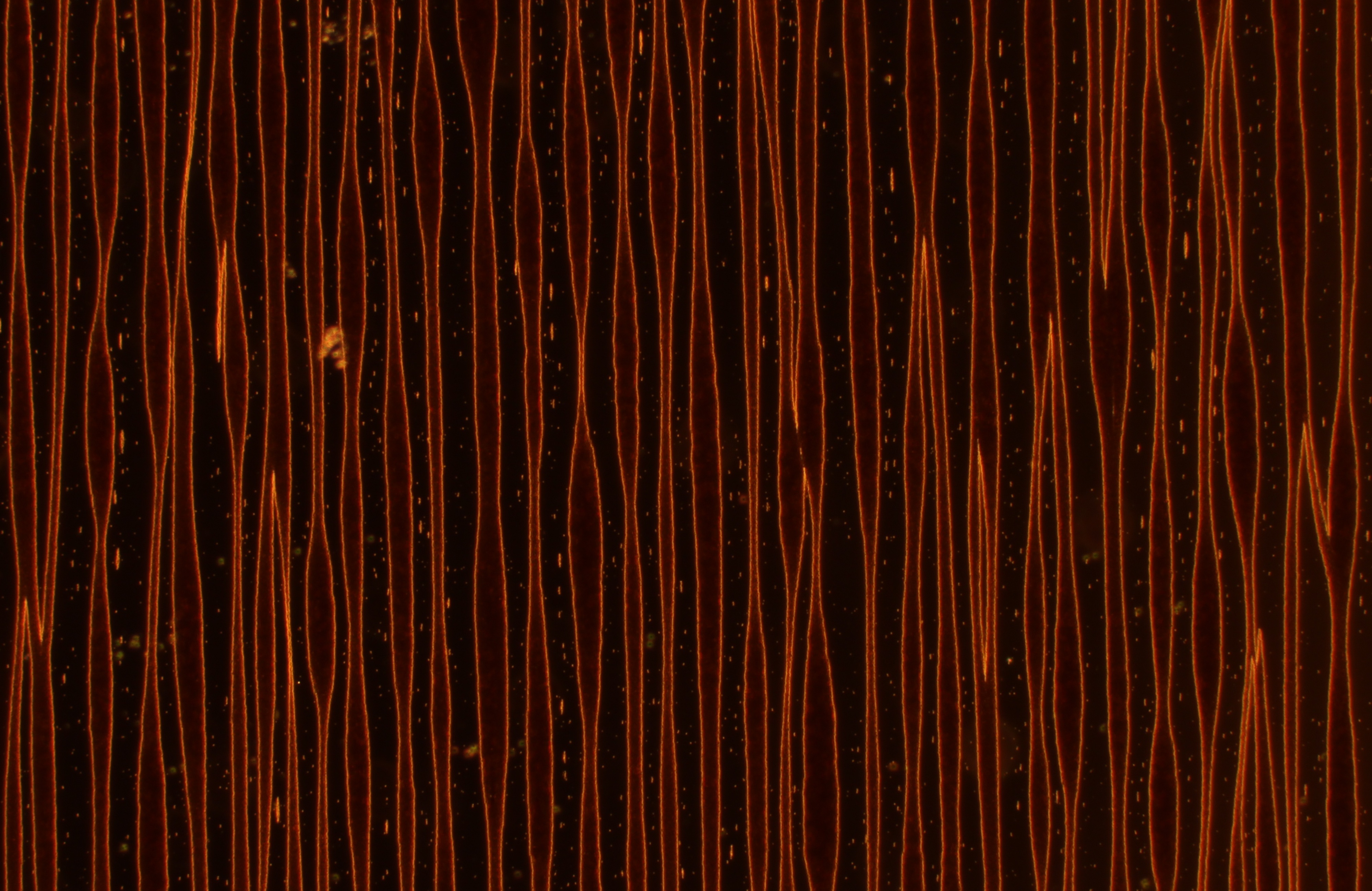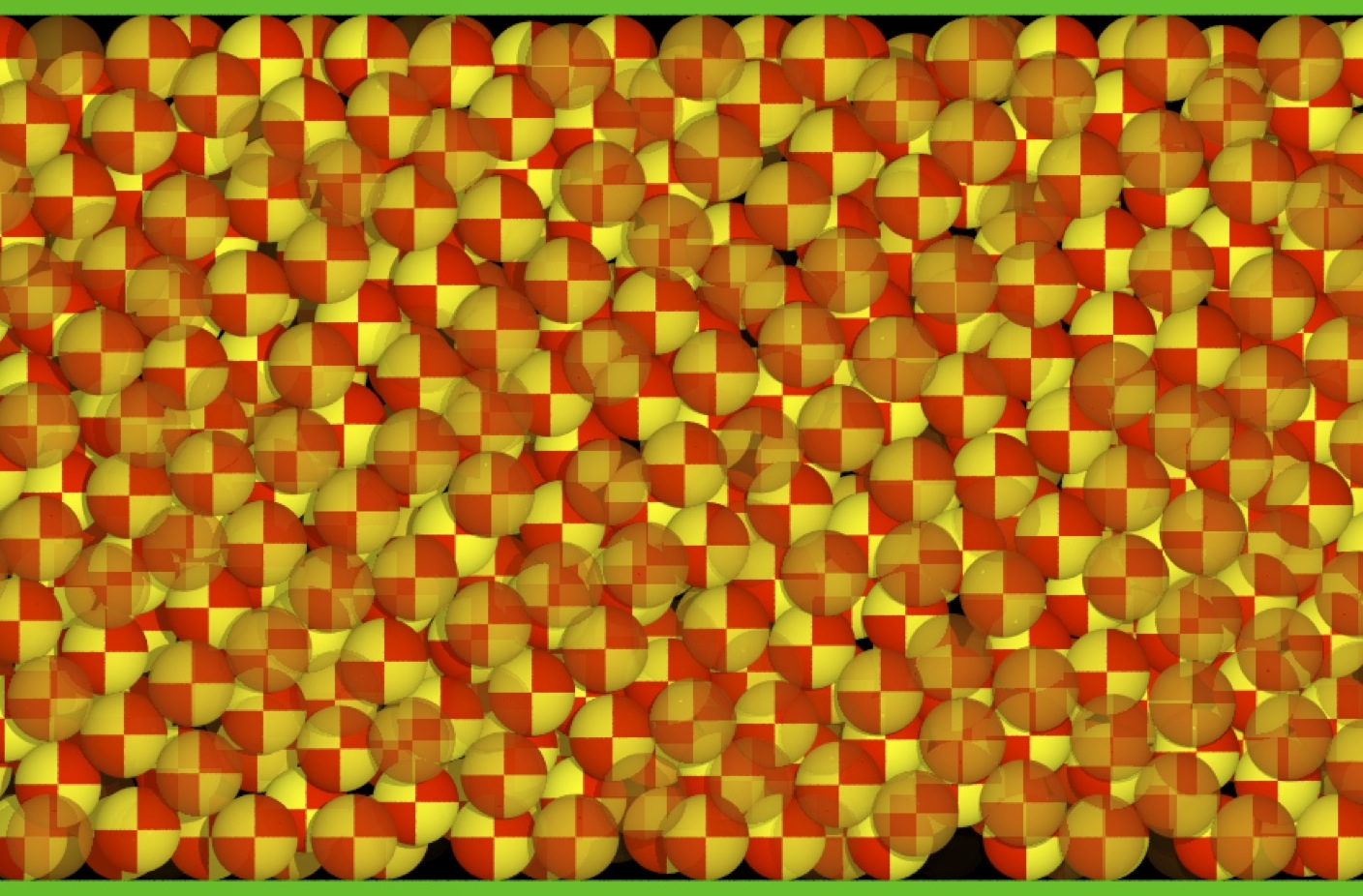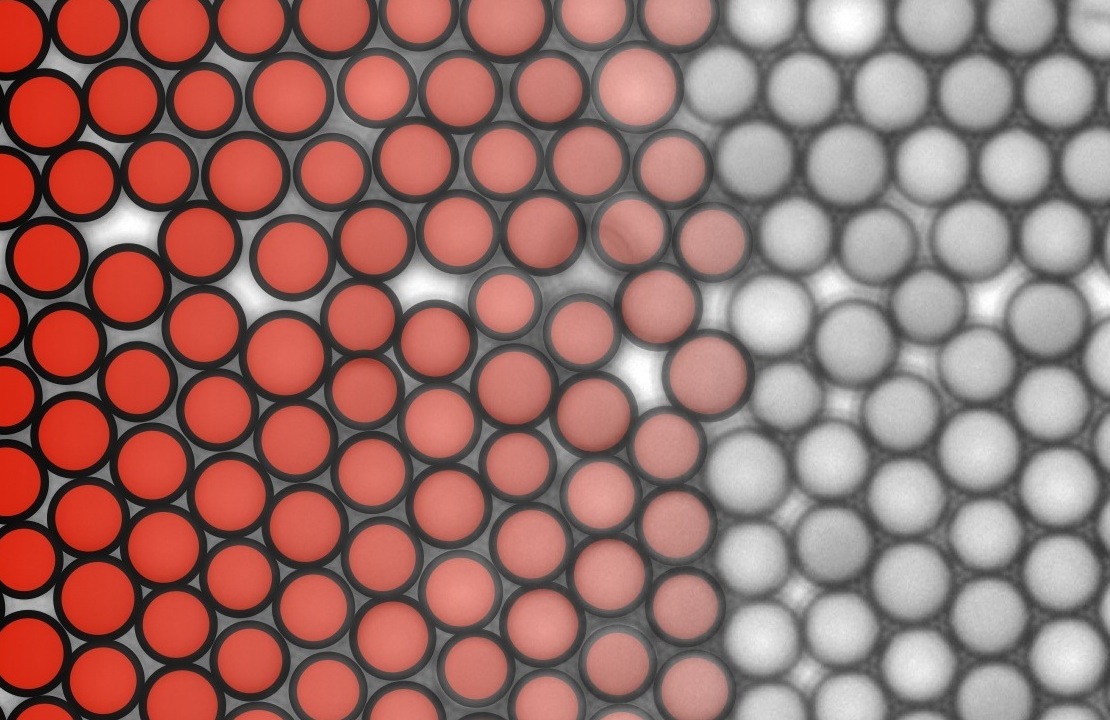
Research
Research in the Swan group focuses on the structure and dynamics of soft matter over many length scales. Such materials include carefully engineered solutions of therapeutic proteins used to treat cancer and autoimmune illnesses, and elaborately concocted slurries and pastes used for atomic precision polishing of silicon wafers and the reinforcement of bullet proof vests. The microscopic constituents of such materials dictate their properties and ultimately their utility to society. By constructing an accurate, if statistical, description of the dynamics of microstructured materials, we seek to predict material properties, guide the design of new materials and explain puzzling experimental observations. The ultimate goal of such research is the discovery novel applications for cutting edge soft matter. Some projects underway with these aims include:
- Tunable annealing and self-assembly of novel nano-particle structures
- Shear induced crystallization of suspensions
- Engineering the rheology and flow properties of nano-medicines
- Colloids in confinement: flow properties and particle transport
- The hydrodynamics of kinetically arrested phases
To aid in our investigations, we use theory and simulation to model materials over a broad range of conditions. At MIT, we have extensive computational resources including a large cluster of CPUs and GPUs for performing detailed, dynamic simulations of important kinetic and transport processes.
Tunable annealing and self-assembly of novel nano-particle structures

The eventual goal of colloidal self-assembly is the production at large scales of functional nano-structured materials. Often, despite the best efforts to engineer the forces driving assembly of particles, they become kinetically arrested and form un-functional, disordered structures instead. It has been seen throughout the literature that the envelope for successful and large scale assembly of nano-particles is exceedingly narrow. In one case, an experiment assembling nano-particles in microgravity, we have purposefully perturbed the particle phase in order to stimulate the annealing of disordered structures and drive them towards thermodynamic equilibrium. Here is a video depicting the same process on the ground. Ordered phases of colloids can possess phononic and photonic bandgaps across useful frequeny ranges. This makes them excellent materials for advancing energy research. The ability to reliably and rapidly self-assemble ordered structures on demand from any stable suspension of colloids would revolutionize the production of functional nano-materials. We are investigating simple methods that enable rapid annealing of disordered structures in order to drive them to form either their equilibrium ordered phase or new out-of-equilibrium phases.
Shear induced crystallization of particle suspensions

Large-amplitude oscillatory shear is an exciting new tool for the investigation of the material properties of complex fluids. Recent work from this group has sought to understand what micro-structure can be assumed by particulate media undergoing such a process. It was demonstrated almost 30 years ago that oscillatory shearing a suspension within a precise range of oscillation frequency and shear rate can drive the particle phase to crystallize. Just what drives this process is largely unknown. What is especially fascinating, however, is that the equilibrium state of the suspension need not be crystalline for shear induced crystallization to occur. Thus, this is a non-equilibrium phase transition. Flow coating and other such processes are among the easiest to employ in the production of industrial quantities of nano-scale materials. By understanding how a laboratory process such as oscillatory shear drives crystallization, we hope to aid in the design of industrial processes that can reliably yield ordered colloidal dispesions. In one relatively straightforward application, these ordered colloidal phases can be used as thermal barrier coatings to increase the efficiency of power generating equipment.
Engineering the rheology and flow properties of nano-medicines

Nano-medicines -- for instance: nano-particles, vesicles and hydrogels for drug delivery or therapeutic proteins for disease treatment -- are seeing intense development as part of a change in what and how medications are administered to patients. Rather than supply a person with a small molecule drug that acts systemically, the goal is to develop precise means of targeting disease with drugs that are more effective and have fewer side effects. One consequence of such targeting specificity is that more of a drug may need to be administered in order to achieve high efficacy.
For therapeutic proteins, the problem is one of high selectivity and low conversion. A monoclonal antibody can be tailored to only target specific signals of disease, but will likely be cleared of the body before encountering its target. The desire then is to balance this battle low conversion by delivering more of the drug as quickly as possible -- that is, to provide a concentrated dose preferably through self-injection. While some concentrated protein solutions are easily injectable, others are so viscous that injection exceeds human force limits. What are the properties of protein suspensions that yield such high viscosity? Certainly it is related to the attractive ("sticky") interactions between them. How are such suspensions structured at equilibrium and how does that structure deform under flow? Flow through a needle can seem violent even for a suspension of nano-particles as shear-rates upwards of 107 s-1 are easily realized. Understanding the flow properties of suspensions of therapeutic proteins will help with the design of nano-medicines that yield better patient compliance and schedules of administration that optimize the efficacy of treatment.
Colloids in confinement: flow properties and particle transport

The behavior of strongly confined materials, those for which a continuum approximation is not a suitable, is of great engineering interest. From the flow of nano-materials through porous networks as in filtration processes to dynamics of suspended particles near solid boundaries as in paints and coatings, there are important questions to ask about how boundaries and structured fluids interact, giving rise to novel or peculiar transport properties. For instance, recent developments in battery technology have focused on using micron-sized colloids as charge carriers in so-called flow batteries. The particles are driven through channels whose walls serve as electrodes. Clearly, the structure of the suspended particles under flow, particularly near the electrodes, plays an important role in the power such a device can generate. Power is a transport property. We are conducting an investigation of the properties of suspended particles near solid boundaries to aid the engineering and rational design of devices, materials and processes involving confined particulate media.
The hydrodynamics of kinetically arrested phases

The enemy of self-assembly is kinetic arrest. The same forces that would drive a microstructured material to assemble into an ordered phase often slow the dynamics of such a phase transition to the point where progress towards ordering is no longer observable. The development of a systematic understanding kinetically arrested materials is the most important problem in soft matter science today. Often such materials are composed of colloids whose interactions drive the arrest. Colloidal glasses and gels have many desirable material properties and are used widely in medical technologies, food science and the cosmetics industry. An important question relates to the similitude between the arrest of colloidal materials and molecular ones. Theories for molecular gels and glasses neglect a key force through which colloids interact: a hydrodynamic force. Our goal is to understand how colloidal dispersions arrest as well as the role of hydrodynamic interactions in affecting the structure of glasses and gels. Ultimately, such work will enable the rationale control of structure and thus function in kinetically arrested colloidal materials.